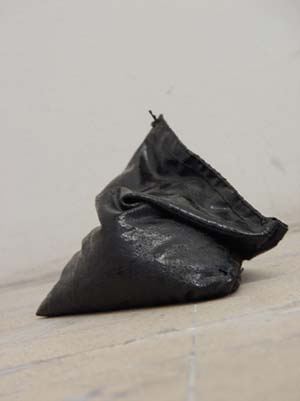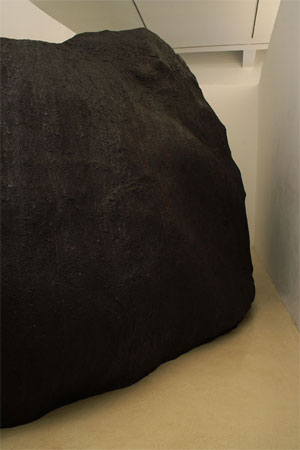A big lump is stuck in the throat, disturbing, holding you back, not letting you move. Orly Sever has installed two walls that cut the space into three parallel corridors. The corridors, transitional spaces, seem to lead elsewhere, like adjunct spaces. The external corridor serves to move from one exhibition to another. Next to it, almost hidden, are two rear spaces one may pass without noticing. Like parallel axes that operate in the background, they are constantly present at the viewer’s side, in his complacent, air-conditioned walk, as he crosses the room on his way to the next show. The middle corridor, entered through an opening, reveals a dark, threatening lump, like a growth on the wall – a monumental hump of tar. Like a constantly present and permeating threat in the domestic sphere, like radon, cellular radiation, a threatening figure seen through the peephole in the door – it seems to gradually fill the corridor. Sever’s dark lump is a mountain she has created in which to bury things. Like a grave, it is a suffocating presence of things that have escaped and died. It is distress incarnate, dissociated from any specific story. The lump grows into a mountain, like a point in time wherefrom life is an ongoing sorrow, a congealed volcanic eruption. Behind the middle avenue lies a narrow side-corridor adjacent to the museum wall, a hiding place where the walls are pushed by the gigantic lump.
Sever’s installation interferes with the viewer’s motion in the circulation of the museum’s wandering route. She narrows the passage, introducing an obstacle. The large dark presence functions not only as an allegory for a sense of emotional oppression, but also as a physical barrier in the space.
Less Reading...

